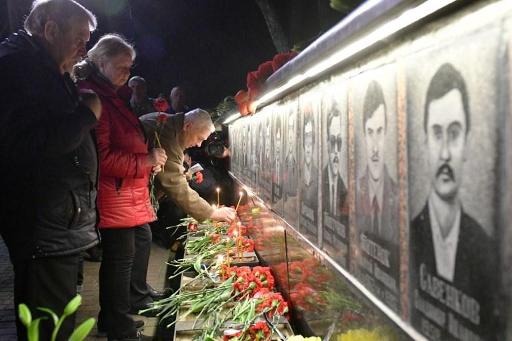Ukraine was commemorating Thursday the 32nd anniversary of the Tchernobyl catastrophe, worst nuclear accident in history, which contaminated a large part of Europe, but most of all Ukraine, Byelorussia and Russia, which were Soviet republics then. “Tchernobyl will remain forever an open wound in the heart of our country,’’ declared the Ukrainian President Petro Porochenko on his Facebook page, calling to “do everything possible to ensure that this tragedy never happens again.’’
During the night, several hundred gathered together for a commemorative ceremony at Slavoutitch, about 50 kilometers away from the power plant, where most of the staff live today.
On 26 April 1986 at 1.23 am, reactor number 4 of the Tchernobyl power plant, about a hundred kilometers north of Kiev, exploded during a security test. The nuclear fuel burned for ten days, projecting radioactive elements in the atmosphere, which contaminated, according to some estimations, up to three quarters of Europe.
Moscow first attempted to conceal the accident. While the first public alert was given on 28 April by Sweden, which had detected an increase in radioactivity, the Soviet Head of State Mikhaïl Gorbatchev only intervened publicly on 14 May.
A total of almost 350,000 persons were evacuated over several years outside a perimeter of 30 kilometers around the plant.
In four years, some 600,000 Soviets were sent to the site, with very little, if any, protection to put the fire out and then, to build a concrete covering in order to isolate the damaged reactor and to clean the neighboring land.
The human toll of the catastrophe is still debated, estimations varying from 30 to 100,000 deaths.
Three other reactors in Tchernobyl continued to generate electricity up until December 2000. After years of dithering, a gigantic airtight steel arch was finally installed above the damaged reactor, end of 2016.
For a cost of 2.1 billion euros, financed by the international community, this structure covered the former cracked and unstable concrete “sarcophagus,” and allowed to better isolate the highly radioactive magma remaining within the reactor.
Result: the rate of radioactivity near the power plant has been divided by ten within a year, according to official estimations.
The Brussels Times

